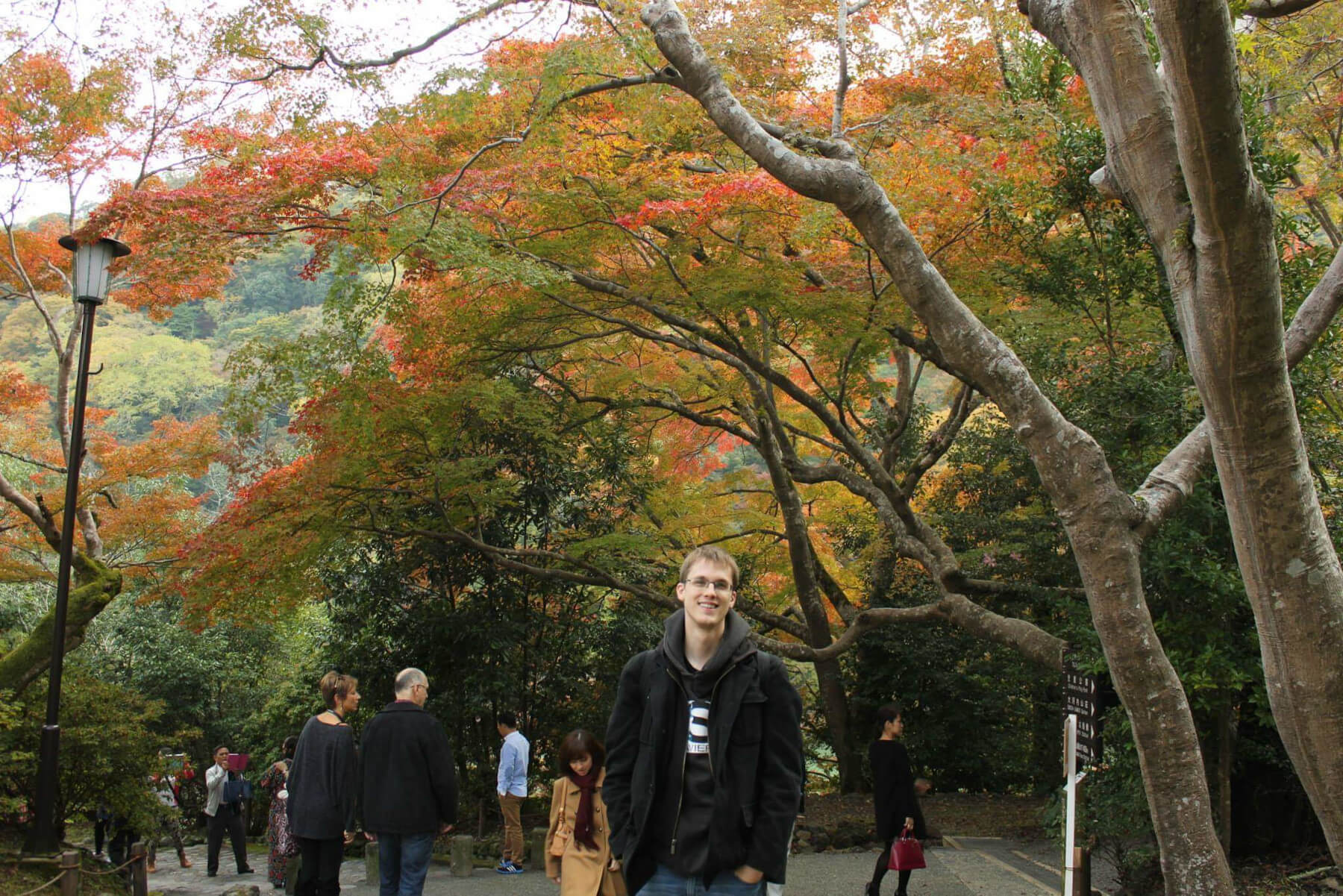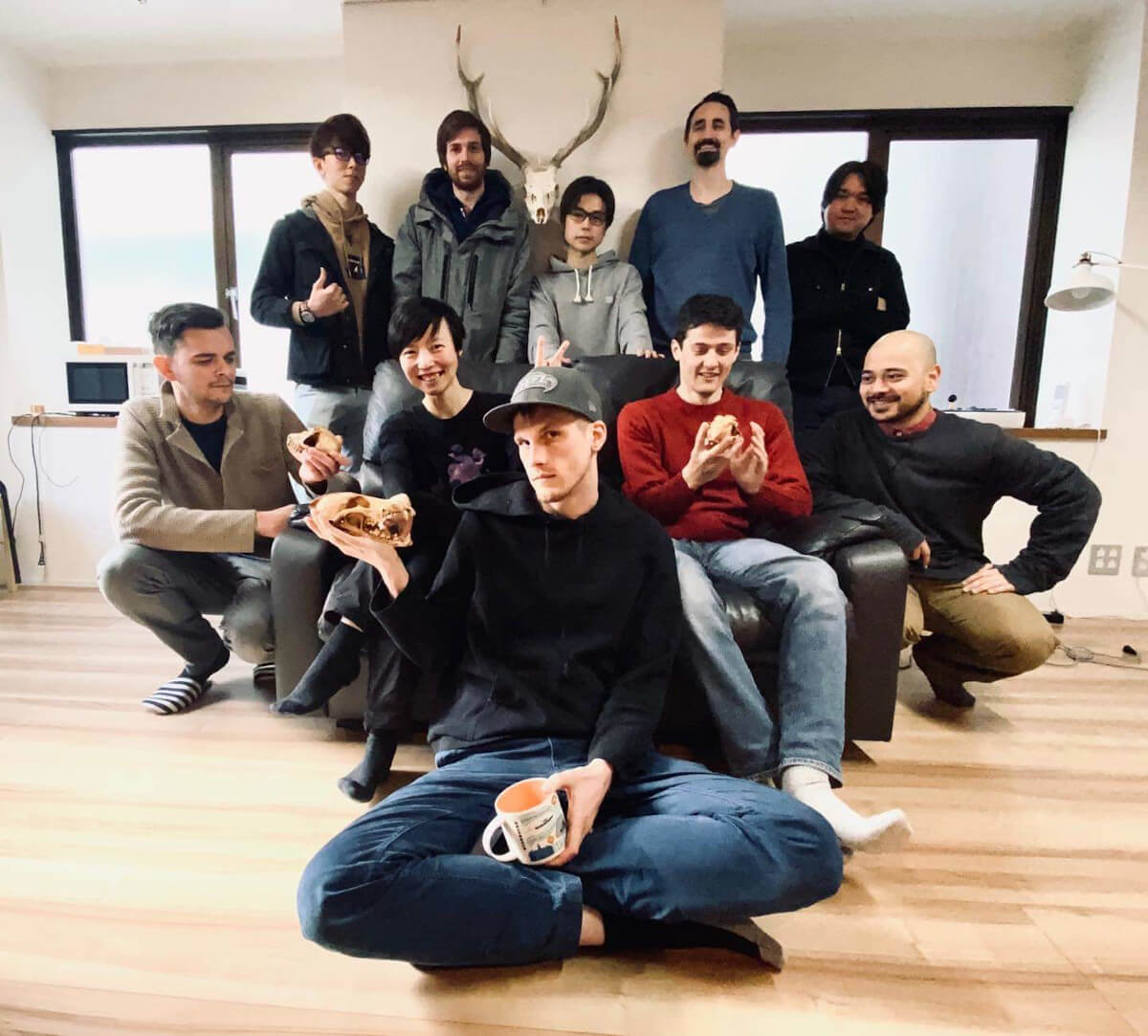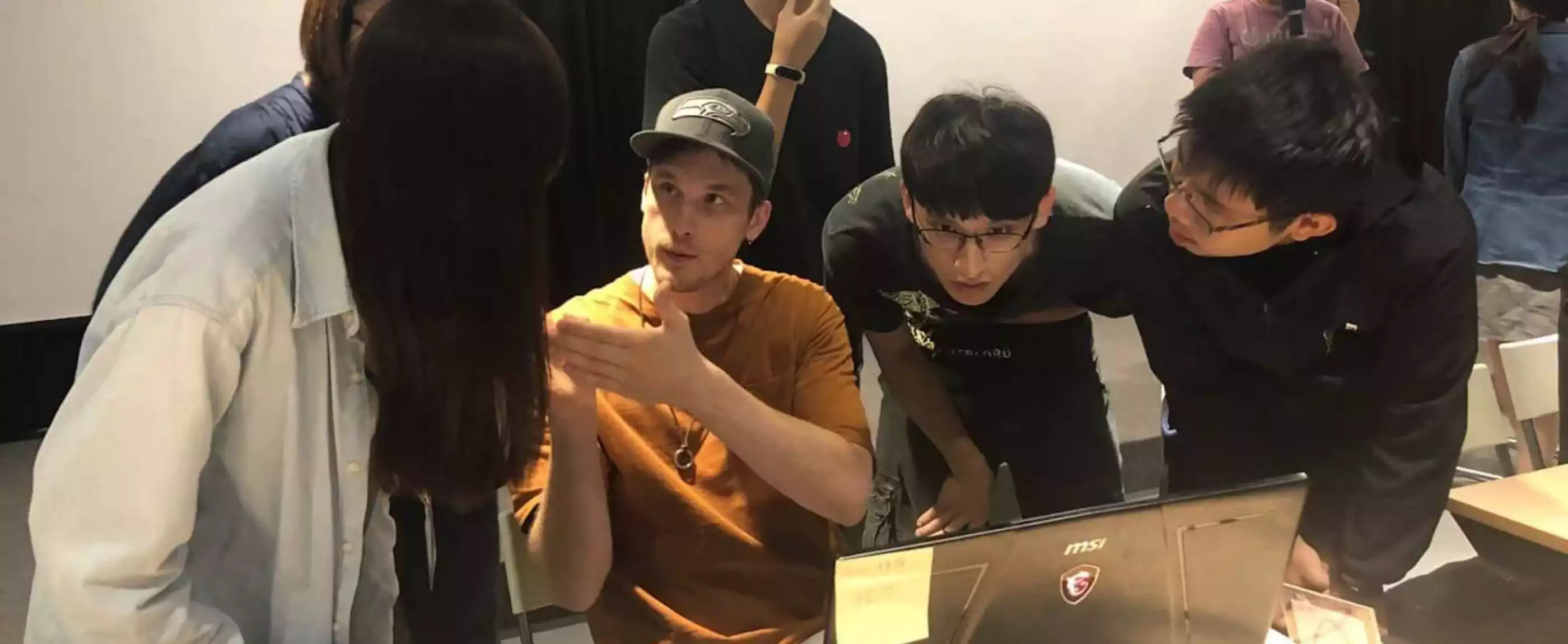In DigiPen graduate Russell Wardinsky’s world, day-to-day living is pleasant and routine.
“I have my cute dog, and I ride my bicycle five minutes to work in the morning,” he says during a recent interview. “Everything I want to eat, I pick up on the way home when I stop into the local supermarket. And everything is clean. Everybody’s polite.”
If that sounds more like life in a video game or a cute simulation, well — more on that later. In actuality, the place Wardinsky calls home is Kyoto, Japan, a city that indeed has strong connections to the world of video games. It’s also the city where Wardinsky currently works as the lead programmer on an international development team for Skeleton Crew Studio, an interactive media and technology company he co-founded in 2017.
Part indie game studio and part work-for-hire operation, the Skeleton Crew team has its hands on a multitude of projects, often involving VR and AR applications for outside clients. A good chunk of business, Wardinsky says, comes from a platform his team developed for hosting online, virtual exhibitions.
“You either download the software or you go on the web, and you control your little avatar like in Second Life,” he says. “You visit a virtual exhibition, go to a few product booths, talk to people.”
The studio’s business clients run the gamut, including auto makers, manga publishers, museums, and more.
“We’re making a delivery website for a company that delivers bulldozers, so if you need construction done in Japan, you go to this website and sign up for a bulldozer,” Wardinsky says.
On the video games front, the studio recently released the critically acclaimed Olija (pronounced “oh-LEE-ya”), a 2D action-adventure game that follows the journey of a fisherman who finds himself shipwrecked on the shores of a strange, distant land.
For Wardinsky, his own story of how he ended up in a foreign country was years in the making. The seed of interest was planted while he was still a student at DigiPen in the BS in Computer Science in Real-Time Interactive Simulation program. While working one summer as an instructor for DigiPen’s ProjectFUN youth education workshops, he remembers hearing two employees conversing in Japanese around the office and being intrigued.
“Listening to them speak Japanese got me really excited, like, ‘Wow, would it be possible to even pick this up? I think that could be kind of fun,’” he recalls.
After graduating in 2007, Wardinsky moved to Champaign, Illinois, to work as a programmer by day for game studio Volition. Meanwhile, he spent his evenings at night school, learning Japanese grammar and vocabulary.
“I wanted to learn it all, so I put in so much effort — hours and hours over the years,” he says. “There was one point where my living room, when I lived in Illinois, kind of looked like a kindergarten. I had printed out all of the characters and then drew pictures of what I thought they meant, and I posted them all around the house. So people would come over and be like, ‘What the heck?’”
Eventually, an opportunity arose to take part in a two-week summer trip to Japan. Using some saved time off following the release of Volition’s Saints Row 2, Wardinsky made his first overseas visit.
“They say art imitates life,” Wardinsky says. “And I never really understood that until I came here. It was like every game I’d ever played from the 80s and 90s was this perfect representation of what this country looks like. It blew me away. The colors. The way the tiles on the ground are perfectly square. How the cashiers treat you at the supermarket. It’s like they recreated their whole world in video games, and it’s like I was ready for it.”
The trip got him wondering once again.
“What would it be like to live here, even if only for a couple months or only for like a year or something?” Wardinsky recalls thinking. “And my wife and I saved up money.”

While it would still be close to five years before they made the move, Wardinsky continued working on his language skills. He even had a chance to put them into practice while working in Chicago at Iron Galaxy Studios, porting classic Capcom arcade games to the Xbox 360 and PlayStation 3 consoles. While working to implement new features and fixes into the games’ original source code, Wardinsky discovered an AI scripting language that was a combination of Japanese and assembly code.
“That was a great job,” he says. “Convenient to know Japanese.”
In 2013, Wardinsky and his wife sold their possessions and traveled to Kyoto, and for the first year, he was enrolled in a full-time Japanese learning program. Wardinsky later met Giles Goddard, one of the original creators of Nintendo’s Star Fox and founder of the indie studio Vitei Games. Wardinsky joined Vitei as a network programmer but was soon recruited to help out with a brand new virtual reality project.
“They had an R&D department called the Backroom that was making a bunch of VR prototypes. And one of them was kind of like Crazy Taxi but for zombies — a ridiculous game. And I had never even played VR before, so they were like, ‘Yeah, can you go to the Backroom and just try this out? We need another programmer on it,’” he says. “I put it on and was just like, ‘This is like a weird dream. I don’t even know what this game is.’”
The game, which would eventually be called The Modern Zombie Taxi Co., was soon after picked up by Sony to be released for their upcoming PlayStation VR headset. The game looked promising, but there was one major problem.
“VR makes people sick, man. I’m not going to lie. Literally, people would get sick playing it. We had test players come and immediately throw the headset off. It was just like, ‘How dare you subject people to this?’” Wardinsky says with a laugh.
While the taxi game was ultimately cancelled, the two-year development period gave Wardinsky plenty of time to start learning the ins and outs of VR development. And when a different studio approached the team with another VR game idea, Wardinsky and another studio partner decided to split from Vitei and create the project independently. Thus, Skeleton Crew Studio was born.
“In the beginning it was just like it sounds,” Wardinsky says. “Skeleton Crew means there are only three of us, and yet we can use any technology and we can do anything the big guys can do for pennies on the dollar.”

Fast forward four years later, the studio has certainly grown beyond those initial three employees.
“We just hired our 26th person yesterday, and I’m interviewing a guy from Norway in three hours,” Wardinsky says. “It’s crazy. I barely program anymore.”
The intention was never to amass a team of people from around the globe, but nevertheless, that’s what happened. The studio currently consists of people who hail from China, Egypt, Finland, Germany, Mexico, and elsewhere. In 2018, Wardinsky also hired fellow DigiPen graduate Aditya “Jef” Hirokawa (2016, BS in Computer Science in Real-Time Interactive Simulation), who works as a programmer on a range of projects.
“They all had a similar kind of story,” Wardinsky says. “They grew up on Nintendo games. They kind of fell in love with Japan. They don’t really know why. Some of them actually lived here. Some of them lived in their home countries, and they wanted to come to Japan.”
What’s in store long-term for the Skeleton Crew team remains to be seen, however, Wardinsky does mention a few fun projects in the works, including a VR game in the vein of Beat Saber and an AR board game. He also hints at a passion project inspired by The Legend of Zelda: A Link to the Past — or rather the unofficial randomized version of the game, which Wardinsky plays each week with an old friend from DigiPen.
Not surprisingly, Wardinsky says he’s always on the lookout for something new and interesting — maybe a new challenge to solve or a cool idea to pursue.
“Companies come to us and say, ‘Is it even possible to do X, Y, Z?’” Wardinsky says. “We’re still using new technology in a cutting-edge way, in ways that people didn’t even know were possible, every single day. The Oculus Quest 2 came out, and we were making stuff for it the first day. I think it’s so exciting to be always using new stuff.”
